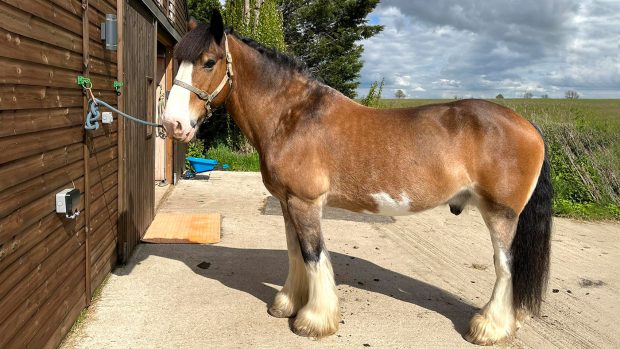We’re just about to fly home from an amazing trip back home to Australia. We spent the first couple of weeks at Silver Hills, my parents’ farm (pictured above) at the foot of the Snowy Mountains in New South Wales, before flying up to the Gold Coast for a week on the beach and to meet my new niece. We can only get back every couple of years, so much of the time is spent catching up with family and friends, but as most of these are horse-obsessed, it is never long before I’m either on a horse or talking about them!
Horses are definitely in my, and my three siblings’, blood. We spent a night looking at photos and newspaper clippings spanning the past four generations of Webb riders, and some of their feats were pretty amazing. From breeding and training a showjumper that nearly went to the Olympics, to representing New South Wales and Australia at polocrosse, to droving cattle 1500km from Queensland to Victoria over six months, what really stood out was the sheer range of disciplines my father, grandfather and great-grandfather took part and were successful in. These also include activities we don’t see much of in England, such as “bronc-riding” (rodeo), campdrafting (cutting a cow out of a pack then manoeuvering it around a course) and horsemanship challenges. Now the baton has been passed on and while I’m training horses for a living in England, we’re all looking forward to my sister, Sandra, and her husband, Will Weston, representing Australia in the upcoming polocrosse test matches against South Africa in a couple of weeks.

Checking out the youngstock at home
I have spoken before about the differences between horse management and training in Australia and the UK, but I think the main thing about the Australian riders I grew up and learnt from is that horses are treated more like other farm stock and that they have to have a purpose; they are used for farm work and for competition. As a consequence, they are generally easier to handle, are more tough and sound, and you rarely see behavioural problems such as napping and rearing. Also, many of the disciplines that are popular in Australia require horses to be “turnaround” horses that are able to stop and turn at speed, much like the American western and rodeo events do, so the way the horses are trained is different to the way we train for dressage and jumping.

I even had some time for some shearing while back in Australia
I count myself very fortunate to have grown up with such knowledge around me to tap into, but starting out in England 20 years ago, I certainly got a few funny looks from people when I was starting horses in round pens, using ropes and talking about horse psychology! Now, with different training methods readily viewed through the internet, the “Aussie” ways have become really popular worldwide. Having said this, over the years, I have learnt a lot from English trainers and riders too, which has led to me having a better seat and developing a deeper understanding of dressage, which I feel is reflected in the fact that top riders now feel comfortable trusting me with their young horses. Nowadays I feel my training is an amalgamation of the two influences and a reflection of my own family; half Aussie and half Pommie!
Continued below…

Jason Webb’s blog: cracking the toughest case I’ve ever had
Jason explains why he thought he wouldn't be

Jason Webb’s blog: One of the worst cases I have ever seen
Jason discusses both horses and riders facing and
When I get back home, a full yard of horses is awaiting me, including a lovely batch of youngsters from the Beaufort Polo breeding operation and some eventing and showjumping prospects. I have my three-day Your Horsemanship camp and a corporate day with JLT Insurance to prepare for among the usual clinics and demonstrations. I’ve also been enjoying judging the inaugural Your Horsemanship Challenge Cup, which will now be a bi-monthly competition for Your Horsemanship members. Your Horsemanship is my online horse training resource and I am really enjoying watching the members’ improvements with their horses. One of the challenges is to open and close a gate with the same hand without releasing your grip. This sounds easy, but it requires a lot of controlled forwards, sideways and backwards movements from your horse to be able to do it successfully; try it next time you are out riding as a test of your control over your horse’s feet!
On top of all this, I’ve also got my own horses to set up for the upcoming polocrosse season, and I have to get myself in shape too before I go to play against South Africa in June. It looks like a busy few months ahead, so I think I’ll just enjoy my last couple of days chilling on the beach with Penny and the kids while I can!
Jason



